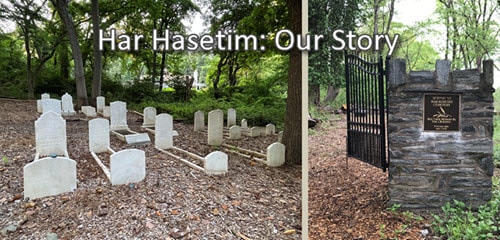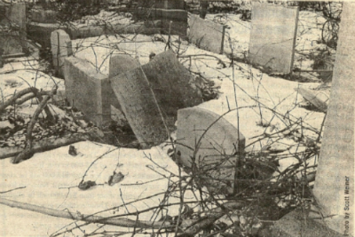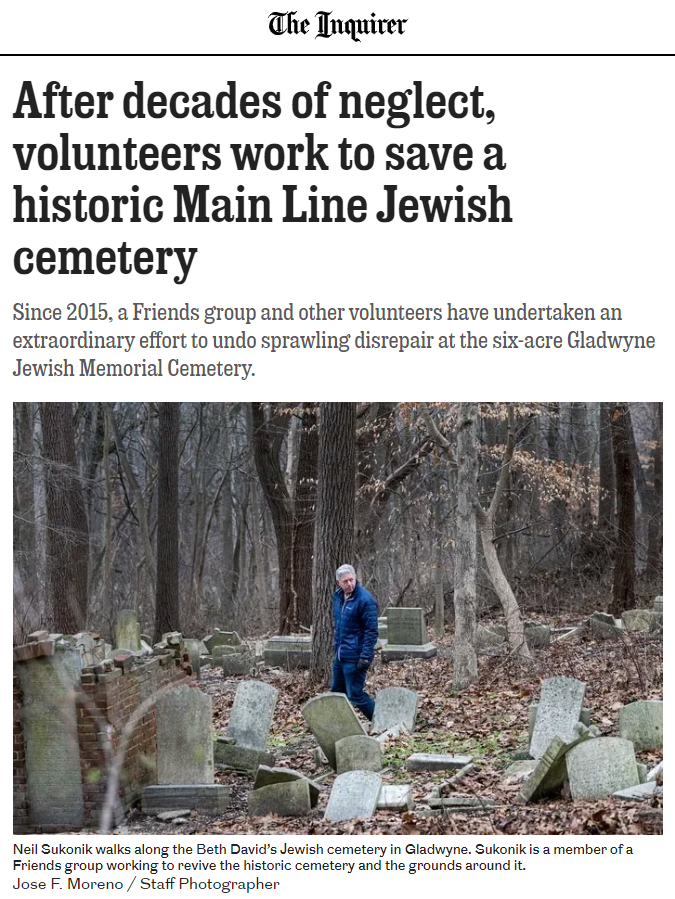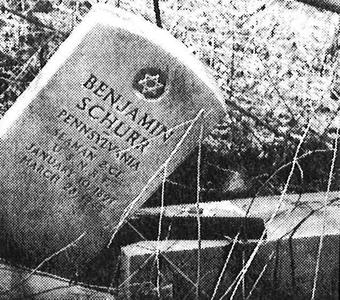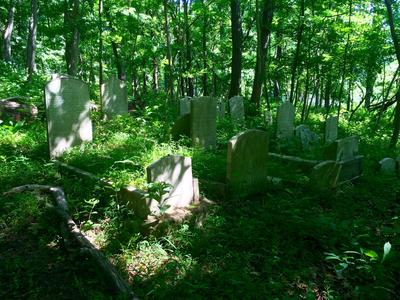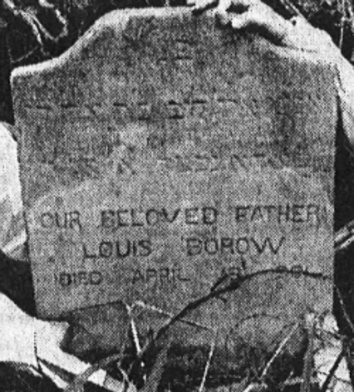History
Click above or here to view our video!
|
Thickets Hide 75 Year-Old Jewish Cemetery in Gladwyne Overlooking Mill Creek Valley
The Main Line Chronicle, November 11, 1965 "PIECING THE HISTORY The little we have learned about Her Hasetim has been pieced together from fragments of information obtained here and there. The land is on high ground over- looking the beautiful Mill Creek Valley and was once the property of (appropriately) the Greaves family. It lies north of Conshohocken State Road between Greaves Lane and Vaughan Lane. The cemetery land was consecrated in 1890 and originally took in 20 acres. It has since been reduced to a plot 460 feet by 282 feet, containing slightly more than three acres. Adjoining it on two sides is an additional parcel recorded in the name of the Independent Chevra Kadisha, originally reserved by a Jewish beneficial burial association for the interment of indigent Jews. The graves are closely grouped in plot and the headstones are almost hidden from sight by dense underbrush and tangled thickets. Many of the stones have been toppled , their bases and some have been fragmented. One common form of Vandalism is the desecration of cemeteries in any category"(Main Line Chronicle, 11/11/65). After a Long Fight, Remains Will Be Saved at Gladwyne Cemetery
By Steve Feldman Jewish Exponent, February 11, 1999 Synopsis "To the delight of the community, the remains of' perhaps thousands of Jews buried at a defunct Jewish cemetery in Gladwyne will not be disinterred for the development of luxury homes. Instead, the owners of what has become known as "the Gladwyne Jewish cemetery" have reportedly reached an agreement with representatives of' the descendants of those buried there, community groups and neighboring Beth David Reform Congregation to turn the cemetery over to Beth David. Litigation since 1988 The fate of Har Hazaism Cemetery — one of the names the Gladwyne cemetery has been known by — has been the subject of a bitter dispute and litigation since 1988. Questions pertained to who actually owned the cemetery, whether that person or persons had a right to sell it, and whether those protesting the disinterment and development had standing to object."(Jewish Exponent, 2/11/99) |
Effort to restore an old Jewish cemetery
By Kristin E. Holmes, Inquirer Staff Writer POSTED: July 25, 2015 100 Year Old Jewish Cemetery Uncovered in Gladwyne
by Judy Zalesne Main Line Jewish Expressions, February 9, 1978 Synopsis "When Louis Borow, a bookbinder from Minsk, settled in Philadelphia in the 1890's, his first concern was making a living for himself and his family in the new country. His second concern was providing for his death. In 1901 Borow died of typhoid fever in Philadelphia Municipal Hospital and was buried, as he had foresightedly arranged, with proper ceremony among fellow Jews in the cemetery Har Hasitim—in Gladwyne. Hundreds of orthodox men, women, and children were buried in Har Hasitim in the years around the turn of the century. During the smallpox epidemic of 1901, more than 30 victims were interred within a three-month period. A child 14 months old lies a few rows from a woman who had seen her hundredth year. Louis Borow, the bookbinder from Minsk, has a final resting place not far from Herschl and Sara Leah Adelman, whose daughter Rose married Borow's son. By 1910 burials at Har Hasitim were diminishing. The topography of the site was not practical and other Jewish cemeteries were being established in more accessible areas with much more room for expansion. But the decline of Har Hasitim is most directly attributable to the decline of the chevra kaddisha itself. As immigrant Jews became more secure in the new land, they became more affluent and more interested in providing their own family burial sites in the larger, newer Jewish cemeteries. Children of immigrants frequently associated the beneficial societies with "greenhorns" or with poverty, so they looked to more modern memorial gardens for their families' final resting places, and the new cemeteries could offer a very appealing concept—perpetual care."(Main Line Jewish Expressions, 2/9/78) |
